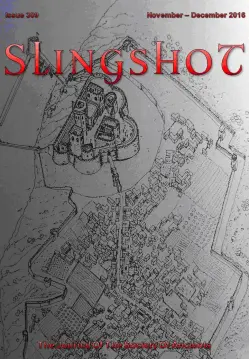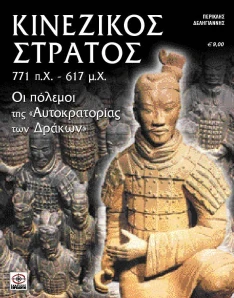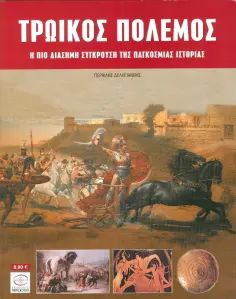24/01/2022
periklisdeligiannis.wordpress.com
Uncategorized
Dutch, naval history, Naval warfare, Netherlands
Republication from heritagetribune
 One of the Shipwrecks in the Hoornse Hop, Scan/ image RCE
One of the Shipwrecks in the Hoornse Hop, Scan/ image RCE
.
By Sebas
Dutch archaeologists have found at least a stunning 34 shipwrecks near the Dutch town of Hoorn. These ships are presumed to be for a large part 16th century Spanish war ships which were sunk during the Battle on the Zuiderzee. This major naval conflict turned out pivotal for the Dutch to gain their sovereignty from Spanish rule in 1573. The ships were found using combined methods for sonar scanning.
More
05/05/2020
periklisdeligiannis.wordpress.com
Uncategorized
Baltic Sea, Denmark, Germany, Hansa, Hanseatic League, Military, Military history, Military topics, naval history, Naval warfare, Navy, Netherlands, Poland, Scandinavia, Sweden
 A map of the expanse of the Hanseatic League, mostly known as Hansa (copyright: W. Heinemann / Bibliographisches Institut Leipzig). The Hanseatic League was a large commercial and also politico-military confederation of merchant guilds and commercial towns in North and Central Europe.
A map of the expanse of the Hanseatic League, mostly known as Hansa (copyright: W. Heinemann / Bibliographisches Institut Leipzig). The Hanseatic League was a large commercial and also politico-military confederation of merchant guilds and commercial towns in North and Central Europe.
More
07/09/2017
periklisdeligiannis.wordpress.com
Uncategorized
Architecture, Belgium, Engineering, Μηχανική, Military, Military history, Military topics, militaty architecture, Netherlands, Renaissance engineering, Renaissance militaty architecture, Spanish

Designs of Jorge Próspero Verboom on an engineering system concerning the envelopment and isolation of an enemy fortress, and mostly a system of parallel lines of attack (and protection of artillery and infantry), 1687. Verboom was a Flemish engineer in the service of the Spanish crown, one of the best of his time. The third plan of his, deals with the design and geometry of a typical fortress with bastions.
More
18/02/2016
periklisdeligiannis.wordpress.com
Uncategorized
Amsterdam, Caesar, Dutch, Germanic, Germanic peoples, Germanics, Germans, Julius Caesar, Netherlands, Roman, Roman Empire, Rome, Southern Netherlands
Republication from the VU University of Amsterdam

Hundreds of skulls and other bones, considered to belong to the massacred Germanics were found in the excavated location (credit: VU University of Amsterdam).
VU archaeologists discover location of historic battle fought by Caesar in Dutch river area
Earliest known battle on Dutch soil.
At a press conference held on Friday 11 December in the Allard Pierson Museum in Amsterdam, archaeologist Nico Roymans from the VU Amsterdam announced a discovery that is truly unique for Dutch archaeology: the location where the Roman general and statesman Julius Caesar massacred two Germanic tribes in the year 55 BC. The location of this battle, which Caesar wrote about in detail in Book IV of his De Bello Gallico, was unknown to date. It is the earliest known battle on Dutch soil. The conclusions are based on a combination of historical, archaeological, and geochemical data.
Skeletal remains, swords and spearheads
It is the first time that the presence of Caesar and his troops in Dutch territory has been explicitly proven. The finds from this battle include large numbers of skeletal remains, swords, spearheads, and a helmet. The two Germanic tribes, the Tencteri and the Usipetes, originated in the area east of the Rhine and had explicitly appealed to Caesar for asylum. Caesar rejected this request for asylum and ordered his troops to destroy the tribes by violent means. Nowadays, we would label such action genocide.
During the press conference, Roymans described in detail the discoveries made in Kessel (North Brabant) and their historical significance. He also showed weapons and skeletal remains from this battle.
More
14/06/2015
periklisdeligiannis.wordpress.com
Uncategorized
Ancient warfare, Belgians, Belgium, Caesar, Celts, France, French, Gaul, Gauls, Germanic, Germany, Military history, Netherlands, Romans, Rome

Reenactment of Roman legionaries at English Heritage Festival in 2011 (photo by Lichfield Lore). The picture could very well represent legionaries ready for combat in the dense forest of Belgica, but the problem is that the depicted legionaries are of the Imperial era.
.
By Periklis Deligiannis
.
In 58 BC the campaign of Julius Caesar for the subjugation of Gaul was going on. That year he overwhelmingly defeated the Germanic Suebi (Swebi) who also intended to conquer Gaul under their king Ariovistus. In the next year, the Roman general turned against the threatening Belgae. Many Gauls felt relieved by the destruction of the Suebi who had been threatening their homeland. Others understood that Caesar intended to turn their country into a Roman province.
The Belgae were a large conglomerate of Celtisized peoples mainly of the Northwestern pre-Celtic ethno-linguistic group (pre-Teutonic Germani) as it seems, whom the Germans had expelled from their cradle (in the east of the Rhine), thereby they settled in northeastern Gaul, mostly between the rivers Seine, Marne and the Rhine. However the Belgae included some Celtic proper and Germanic tribes and clans.
After their settlement in Gaul they had almost completely adopted La Tene culture (typical Celtic). Caesar in his ‘De Bello Gallico’ describes them as the most warlike and brave among the Gauls. The Belgians were additionally strengthened due to their long wars against the Germans. The majority of them were fanatically anti-Roman and their leaders and nobles supposedly kept their morals intact without succumbing to the Roman bribe attempts. The Belgae tribes were united in a tribal confederation on the basis of their common origins and culture.
The Belgae realized that Caesar would campaign against them and thus their leaders started to exchange hostages in order to further strengthen the bonds of their union.
More
 One of the Shipwrecks in the Hoornse Hop, Scan/ image RCE
One of the Shipwrecks in the Hoornse Hop, Scan/ image RCE









